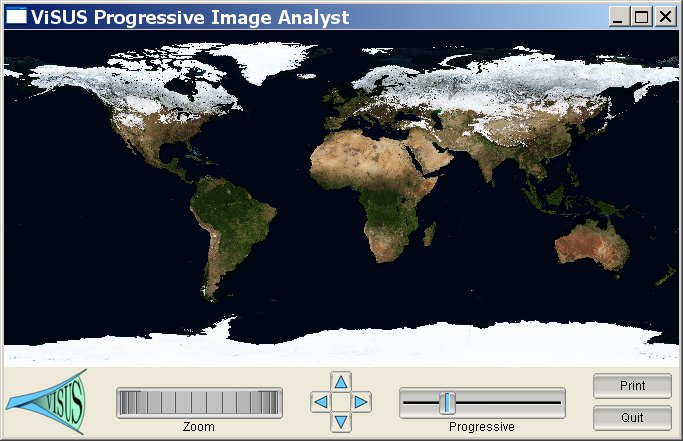|
|

|
Interactive editing of massive imagery made simple: Turning Atlanta into Atlantis.
B. Summa, G. Scorzelli, M. Jiang, P.-T. Bremer, and V. Pascucci,
ACM Transactions on Graphics (TOG) TOG, Volume 30 Issue 2, 2011, pp. 7:1-7:13.
To be presented at SIGGRAPH 2011.
 Paper. Paper.
|
|
|

|
Edge Maps: Representing Flow with Bounded Error.
H. Bhatia, S. Jadhav, P.-T. Bremer, G. Chen, J.A. Levine, L.G. Nonato, V. Pascucci,
Proceedings of IEEE Pacific Visualization 2011, pp. 75-82,winner of the best paper award.
 Paper. Paper.
|

|
|
|
|

|
Parallel Gradient Domain Processing of Massive Images.
S. Philip, B. Summa, P.-T. Bremer, and V. Pascucci,
Proceedings of the Eurographics Symposium on Parallel Graphics and Visualization 2011, pp. 11-19.
 Paper. Paper.
|
|
|

|
Visual Exploration of High Dimensional Scalar Functions .
S. Gerber, P.-T. Bremer, v. Pascucci, and R. Whitaker,
IEEE Transactions on Visualization and Computer Graphics 16(6), pp. 1271-1280, 2010.
 Paper. Paper.
|
|
|

|
Interactive Exploration and Analysis of Large Scale Simulations Using Topology-based Data Segmentation.
P.-T. Bremer, G. Weber, J. Tierny, V. Pascucci, M. Day, and J. Bell,
IEEE Transactions on Visualization and Computer Graphics 99, 2010.
 Paper. Paper.
|
|
|

|
Analyzing and Tracking Burning Structures in Lean Premixed Hydrogen Flames.
P.-T. Bremer, G. Weber, V. Pascucci, M. Day, and J. Bell,
IEEE Transactions on Visualization and Computer Graphics 16(2), 2010.
 Paper. Paper.
|
|
|

|
Streaming-Enabled Parallel Dataflow Architecture for Multicore Systems.
H. T. Vo, D. K. Osmari, B. Summa, J. L. D. Comba, V. Pascucci, and C. T. Silva,
Comput. Graph. Forum, 29(3), pp. 1073-1082, 2010,
Proceedings of IEEE/VGTC EuroVis 2010.
 Paper. Paper.
|
|
|
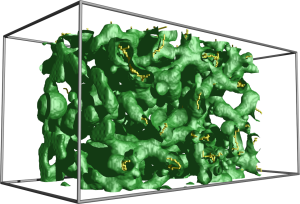
|
Topologically Clean Distance Fields.
A. Gyulassy,
V. Natarajan,
Mark Duchaineau ,
Valerio Pascucci,
Eduardo M. Bringa,
Andrew Higginbotham,
and
Bernd Hamann,
IEEE Transactions on Visualization and Computer Graphics 13(6), pp. 1432-1439,
Proceedings of VIS 2007.
 Paper. Paper.
|
|
|

|
Efficient Computation of Morse-Smale Complexes for Three-dimensional Scalar Functions.
A. Gyulassy,
V. Natarajan,
Valerio Pascucci,
and
Bernd Hamann,
IEEE Transactions on Visualization and Computer Graphics 13(6), pp. 1440-1447,
Proceedings of VIS 2007.
 Paper. Paper.
|
|
|

|
Genus Oblivious Cross Parameterization: Robust Topological Management of Intersurface Maps.
Janine Bennett,
Valerio Pascucci,
and
Ken Joy,
Proceedings of Pacific Graphics 2007 pp. 238-247, IEEE Computer Society, 2007.
 Paper. Paper.
|
|
|
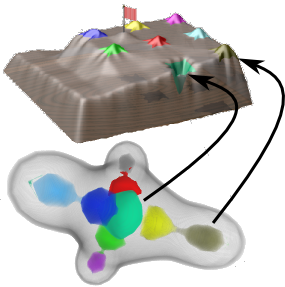
|
Topological Landscapes: A Terrain Metaphor for Scientific Data.
Gunther Weber ,
P.-T. Bremer,
and
Valerio Pascucci,
IEEE Transactions on Visualization and Computer Graphics to appear,
Proceedings of VIS 2007.
 Paper. Paper.
|
|
|

|
Robust On-line Computation of Reeb Graphs: Simplicity and Speed.
V. Pascucci,
G. Scorzelli,
P.-T. Bremer,
and
A. Mascarenhas,
ACM Transactions on graphics, pp. 58.1-58.9, 2007,
Proceedings of SIGGRAPH 2007.
 Paper. Paper.
 Abstract. Abstract.
 Find undesired tunnels in a 3D model using the Reeb graph (106MB video). Find undesired tunnels in a 3D model using the Reeb graph (106MB video).
 Reeb graph of a running horse (7.7MB video). Reeb graph of a running horse (7.7MB video).
|
|
|

|
Understanding the Structure of the Turbulent Mixing Layer in Hydrodynamic Instabilities.
D. Laney,
P.-T. Bremer,
A. Mascarenhas,
P. Miller, and V. Pascucci,
IEEE Transactions on Visualization and Computer Graphics Vol. 12, No. 5, pp. 1053-1060, 2006.
Proceedings of IEEE VIS 2006, winner of the best application paper award.
 Paper. Paper.
 Tracking Bubbles in a Rayleigh-Taylor Instability (48MB video). Tracking Bubbles in a Rayleigh-Taylor Instability (48MB video).
 Invited talk at the
Workshop on Ultra-Scale Visualization, Supercomputing 2006. Invited talk at the
Workshop on Ultra-Scale Visualization, Supercomputing 2006.
|

|
|
|
|

|
Progressive Volume Rendering of Large Unstructured Grids.
S. Callahan,
L. Bavoil,
V. Pascucci, and
C. Silva,
IEEE Transactions on Visualization and Computer Graphics Vol. 12, No. 5, pp. 1307-1314, 2006.
Proceedings of IEEE VIS 2006.
(pdf-paper)
|
|
|
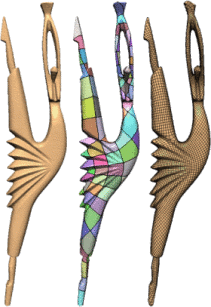
|
Spectral surface quadrangulation.
S. Dong,
P.-T. Bremer,
M. Garland,
V. Pascucci, and
J. Hart,
ACM Transactions on Graphics, Volume 25 , Issue 3, pp.1057-1066qs (July 2006).
Proceedings of SIGGRAPH 2006
(pdf-paper)
|
|
|

|
Persistence-Sensitive Simplification of Functions on
2-Manifolds.
H. Edelsbrunner,
D. Morozov,
and V. Pascucci,
In Proceeding of the 22-th ACM Symposium on
Computational Geometry (SoCG), 2006.
(pdf-paper)
|
|
|

|
Streaming Simplification of Tetrahedral Meshes.
H. Vo,
S. Callahan,
P. Lindstrom,
V. Pascucci, and
C. Silva,
IEEE Transactions on Visualization and Computer Graphics, to appear.
|
|
|

|
Topology-based Simplification for Feature Extraction from 3D Scalar Fields
A. Gyulassy,
V. Natarajan,
V. Pascucci,
P.-T. Bremer,
and
Bernd Hamann,
IEEE Visualization 2005, pages 275-280, 2005.
(pdf-paper)
|
|
|

|
Cache-Oblivious Mesh Layouts
S.-E. Yoon,
P. Lindstrom,
V. Pascucci, and
D. Manocha,
SIGGRAPH 2005, (ACM Transactions on Graphics), vol 24, n. 3,pages 886--893, 2005.
(pdf-paper)
(web-page) (source code)
|
|
|

|
Multi-Resolution computation and presentation of Contour Trees
V. Pascucci,
K. Cole-McLaughlin,
and
G. Scorzelli,
LLNL Technical Report number UCRL-PROC-208680.
Preliminary version appeared in the proceedings of the IASTED conference on
Visualization, Imaging, and Image Processing (VIIP 2004), 2004, pp.452-290.
(pdf-paper) (Linux and windows demo)
|
|
|

|
Local and Global Comparison of Continuous Functions
H. Edelsbrunner,
J. Harer,
V. Natarajan,
and V. Pascucci,
IEEE Conference on Visualization, 2004, pages 275-280.
(pdf-paper)
|
|
|

|
Implicit Occluders
S. Pesco,
P. Lindstrom,
V. Pascucci, and
C. Silva,
IEEE/SIGGRAPH Symposium on Volume Visualization, 2004, pages 47-54.
(pdf-paper)
|
|
|

|
Encoding Volumetric Grids For Streaming Isosurface Extraction
A. Mascarenhas,
M. Isenburg,
V. Pascucci, and
J. Snoeyink,
In Proceeding of the 2-nd International Symposium on 3D Data Processing,
Visualization and Transmission (3DPVT), 2004, to appear.
(pdf-paper)
|
|
|
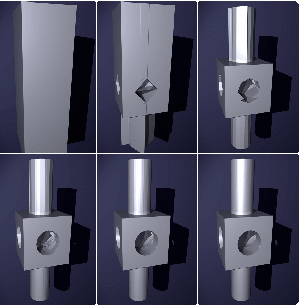
|
Progressive Dimension-Independent Boolean Operations
A. Paoluzzi,
V. Pascucci, and
G. Scorzelli,
In Proceeding of the 9-th ACM Symposium on Solid Modeling and Applications (SM04), 2004, pages 203-211.
(pdf-paper) (mechanical-piece-avi-animation)
(temple-avi-animation)
|
|
|

|
Time-varying Reeb Graphs for Continuous Space-Time Data
H. Edelsbrunner,
J. Harer,
A. Mascarenhas,
and V. Pascucci,
In Proceeding of the 20-th ACM Symposium on
Computational Geometry (SoCG), 2004, pages 366-372.
(pdf-paper)
|
|
|

|
Topology Diagram of Scalar Fields in Scientific Visualization
V. Pascucci,
Chapter 8 in Topological Data Structures for Surfaces, March, 2004.
(book-website)
|
|
|

|
Contour Trees and Small Seed Sets for Isosurface Generation
M. van Kreveld, R. van Oostrum,
C. Bajaj,
V. Pascucci and D. Schikore
Chapter 5 in Topological Data Structures for Surfaces, March, 2004.
(book-website)
|
|
|

|
Isosurface Computation Made Simple: Hardware Acceleration, Adaptive Refinement and Tetrahedral Stripping
V. Pascucci,
Joint Eurographics - IEEE TVCG Symposium on Visualization (VisSym), 2004, pages 293-300.
(pdf-paper)
|
|
|

|
A Multi-resolution Data Structure for Two-dimensional Morse Functions
P.-T. Bremer,
H. Edelsbrunner,
Bernd Hamann,
and V. Pascucci,
IEEE Conference on Visualization, 2003, pages 139-146.
(pdf-paper) (avi-animation, may require Vidomi Player)
|
|
|

|
A Multi-Layered Image Cache for Scientific Visualization
E. LaMar, and V. Pascucci,
IEEE Symposium on Parallel and Large-DataVisualization and Graphics (PVG), 2003, pages 61-68.
(pdf-paper)
(pdf-presentation)
|
|
|

|
Geometric Programming for Computer Aided Design
A. Paoluzzi,
with contributions from V. Pascucci, M.Vicentino, C.
Baldazzi, and S. Portuesi
John Wiley and Sons, 2003.
(pdf-table-of-contetnts)
(buy-the-book)
(visit-the-PLASM-site)
(vrml-S._Stefano_Rotondo)
|
|
|
 |
Parallel Computation of the Topology of Level
Sets
V. Pascucci,
K. Cole-McLaughlin,
Algorithmica, vol. 38, n. 2, October 2003, pages 249-268.
(pdf-paper)
|
|
|

| Loops
in Reeb Graphs of 2-Manifolds
K. Cole-McLaughlin,
H. Edelsbrunner,
J. Harer,
V. Natarajan,
and V. Pascucci.
In Proceeding of the 19-th ACM Symposium on
Computational Geometry (SoCG), 2003, pages 344-350.
(pdf-paper)
(pdf-presentation)
|
|
|
 |
Morse Complexes for Piecewise Linear
3-Manifolds
H. Edelsbrunner,
J. Harer,
V. Natarajan,
and V. Pascucci,.
In Proceeding of the 19-th ACM Symposium on Computational Geometry (SoCG),
2003, pages 361-370.
(pdf-paper)
(pdf-presentation)
|
|
|
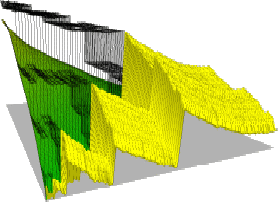
|
Using Graphs for Fast Error Term
Approximation of Time-varying Datasets
C. Nuber, E. C. LaMar, V. Pascucci,
Bernd Hamann,
K. I. Joy,
In Proceedings of Eurographics VisSym 2003, to appear.
(pdf-paper)
|
|
|

|
Real-Time Monitoring of Large Scientific Simulations
V. Pascucci,
D. Laney,
R. J. Frank,
G. Scorzelli,
L. Linsen,
Bernd Hamann,
and F. Gygi,
In Proceedings of the 18-th annual ACM Symposium on Applied Computing,
March, 2003, Melbourne, FL, pages 194-198.
(pdf-paper)
(pdf-presentation)
|
|
|
 |
Dynamic
maintenance and visualization of molecular surfaces,
C. Bajaj,
V. Pascucci,
A. Shamir,
R. J. Holt, and A. N. Netravali,
Discrete Applied Mathematics,
Volume 127, Issue 1, April 2003, pages 23-51.
(pdf-paper)
(mpeg-animation)
|
|
|

|
Hierarchical Indexing for Out-of-Core Access to Multi-Resolution Data
V. Pascucci and , R. J. Frank,
Chapter in Hierarchical and Geometrical Methods in Scientific Visualization, 2002, pages 225-241.
(pdf-paper)
|
|
|

|
Interactive View-dependent Rendering of Large Isosurfaces
B. Gregorski,
Mark Duchaineau,
P. Lindstrom,
V. Pascucci, and , K. I. Joy,
In Proceedings of IEEE Conference on Visualization, 2002, pages 475-482.
(pdf-paper)
|
|
|

|
Slow Growing
Subdivision (SGS) in Any Dimension: Towards Removing the Curse of
Dimensionality,
V. Pascucci,
Computer Graphics Forum,
vol. 21, n. 3, September 2002, pages 451-460, (Proceeding of
Eurographics 2002).
(pdf-paper)
(pdf-presentation) |
|
|

|
Terrain Simplification Simplified: A General Framework for View-Dependent Out-of-Core Visualization,
P. Lindstrom and V. Pascucci,
IEEE Transactions on Visualization and Computer Graphics, vol. 8, n.3, July-September 2002, pages 239-254.
(pdf-paper)
(mpeg-animation)
|
|
|

|
Finding line segments with Tabu Search.
C. Guerra and V. Pascucci,
IEICE Transactions on Information and Systems,
vol.E84-D,n.12, December 2001, pages 1739-1744.
(pdf-paper)
|
|
|

|
Global Static Indexing for Real-time Exploration of Very Large Regular Grids.
V. Pascucci and R. J. Frank,
In proceedings of Super Computing 2001,
on-line proceeding, November, 2001.
(pdf-paper)
(pdf-presentation)
|
|
|

|
Temporal and Spatial Level of Details for Dynamic Meshes.
A. Shamir,
and V. Pascucci,
In proceedings of ACM Symposium on Virtual Reality Software and Technology,
pages 77-84, November, 2001.
(pdf-paper)
(pdf-presentation)
|
|
|

|
Visualization of Large Terrains Made Easy.
P. Lindstrom,
and V. Pascucci,
In proceedings of IEEE Conference on Visualization,
2001, pages 363-370,574.
(pdf-paper)
(pdf-presentation)
(source-code,
data,
addendum,
maintained by Peter)
|
|
|

|
Time critical isosurface refinement and smoothing,
V. Pascucci and
C. Bajaj,
In Proceeding of the ACM Symposium on Volume Visualization and Graphics (VolVis), 2000, pages 22-42.
(pdf-paper)
(pdf-presentation)
|
|
|
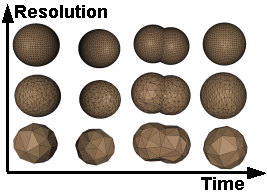
|
Multi-Resolution Dynamic Meshes with Arbitrary Deformations.
A. Shamir,
V. Pascucci, and
C. Bajaj,
In Proceedings of the IEEE Conference on Visualization,
2000, pages 423-430.
(pdf-paper)
(pdf-presentation)
|
|
|

|
Progressive Compression and Transmission of Arbitrary Triangular Meshes.
C. Bajaj,
V. Pascucci, and G. Zhuang,
In Proceedings of the IEEE Conference on Visualization,
1999, pages 307-316.
(pdf-paper)
(pdf-presentation)
(mpeg-horse-reconstruction,mpeg-cow-reconstruction)
|
|
|

|
Parallel accelerated isocontouring for out-of-core visualization.
C. Bajaj,
V. Pascucci, D. Thompson, and X. Y. Zhang,
Proceedings of the 1999 IEEE symposium on Parallel visualization and graphics (PVG),
1999, pages 97-104.
(pdf-paper)
|
|
|

|
Hypervolume visualization: A challenge in simplicity.
C. Bajaj,
V. Pascucci,
G. Rabbiolo,
and D. R. Schikore,
In Proceedings of the IEEE Symposium on Volume Visualization (VolVis),
1998, pages 95-102.
(pdf-paper and
color-plate)
|
|
|

|
The Contour Spectrum,
C. Bajaj,
V. Pascucci, and D. R. Schikore
In Proceedings of IEEE Conference on Visualization, 1997, pages 167-175.
(pdf-paper) (pdf-presentation)
|
|
|
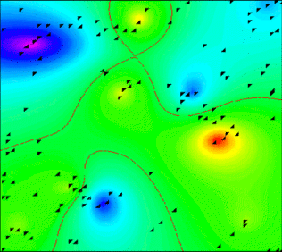 |
Contour trees and small seed sets for
isosurface traversal.
M. van Kreveld, R. van Oostrum,
C. Bajaj,
V. Pascucci, and D. R. Schikore,
In Proceedings of the 13th ACM Annual Symposium on
Computational Geometry (SoCG),1997, pages 212-220.
ACM Press.
(pdf-paper)
|
|
|
 |
Fast Isocontouring for Improved Interactivity.
C. Bajaj,
V. Pascucci, and D. R. Schikore,
In Proceedings of the IEEE, ACM/SIGGRAPH Symposium Volume Visualization 1996, pages 39-46.
ACM Press.
(pdf-paper)
|
|
|
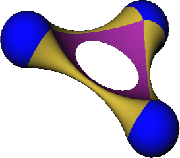
|
NURBS based
B-rep models for macromolecules and their properties.
C. Bajaj,
H. Y. Lee, R. Merkert, and V. Pascucci
In Proceedings of the 4th
Symposium on Solid Modeling and Applications, pages 217-228, New York,
May 14-16 1997. ACM Press.
(pdf-paper)
|
|
|

|
Splitting a complex of convex polytopes in any dimension,
C. Bajaj,
and V. Pascucci
In Proceedings of the 12-th ACM Symposium On Computational Geometry (SoCG), 1996, pages 88-97.
(pdf-paper)
|
|
|

|
Prototype shape modeling with a design language,
A. Paoluzzi,
V. Pascucci, and C. Sansoni
In Proceedings of the Fifth International Conference on Computer-Aided Design Futures, (CAAD Futures '95), 1995, pages 127-141.
(pdf-paper)
|
|
|
|
|
|
|
|



































































